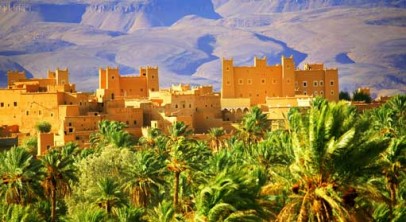Western Mediterranean Explorer aboard Saga Sapphire

1 Southampton, England
Lying near the head of Southampton Water, a peninsula between the estuaries of the Rivers Test and Itchen, Southampton is Britain’s largest cruise port.
It has been one of England’s major ports since the Middle Ages, when it exported wool and hides from the hinterland and imported wine from Bordeaux. The city suffered heavy damage during World War Two and as a result the city centre has been extensively rebuilt.
2 Melilla, Spain
Melilla is a Spanish exclave located on the Mediterranean Rif coast of North Africa, bordering Morocco. Its chequered past has embraced periods of Phoenician, Punic, Roman and Byzantine rule and it was conquered by Spain in 1497.
The latter part of the 19th century and the first quarter of the 20th century saw hostilities between Rif berbers and the Spanish with the latter finally reinstating their control in 1927. The city was used by General Francisco Franco as one of his staging grounds for the rebellion of 1936 and his statue still remains.
As part of the Spanish protectorate, Melilla developed the architectural style of Modernisme, the Catalan version of Art Nouveau, and boasts the second most important concentration of Modernist works in Spain, after Barcelona.
Please note: We are not offering tours here as it is unlikely that they will provide value for money as it is both easy and economical for passengers to explore independently.
3 Tunis, Tunisia
Capital of Tunisia, the city of Tunis exudes a distinctly European atmosphere evident in the French colonial architecture, while its enthralling history and traditions come alive with visits to the colourful souks and markets, ancient remains and the vibrant medina, now a UNESCO World Heritage Site.
Nearby, the remains of the ancient city of Carthage reveal an incredible history that incorporates the rule of the Phoenicians and its status as the third largest city within the Roman Empire. Perhaps travel further afield to Dougga, the largest and most spectacular Roman site in Tunisia.
4 Valletta, Malta
Malta’s capital city was built by the Knights of St John in 1565 and named after the French Grand Master of the Order, La Vallette. It is a great place to explore on foot as it’s full of historical sights and many shops, cafés and restaurants. St John’s Co-Cathedral is certainly worth a visit, its resplendent interior making it one of Malta’s most important treasures.
The city itself is a masterpiece of baroque architecture with narrow streets leading to pretty courtyards, and with fountains and statues dotted throughout, including Republic Square’s monument to Queen Victoria, an echo of British Imperial influence on the island. The Grand Harbour, one of the world’s deepest natural harbours, adds to Valletta’s charm and mystique.
Please note: The ship’s berth is at the bottom of a steep hill so you will need to walk uphill or take a taxi into the centre of Valletta. Current regulations prohibit tour vehicles from re-entering the port, which means you will be required to walk a maximum of 500 yards back to the ship.
5 Palermo, Sicily
Situated on the north-west coast of Sicily, the historic port of Palermo can trace its origins back to the Phoenicians. With other occupants including the Carthaginians, Saracens and Normans, it has evolved with beautiful and varied architecture such as the Norman Palace and cathedral.
Close by lies impressive Monte Pellegrino Pilgrims Mountain with its shrine of Santa Rosalia, and the surrounding area offers several charming towns and villages and a coastline worthy of discovery.
6 Algiers, Algeria
The capital and largest city of Algeria is also known as ‘Algiers the White’ for its gleaming white buildings, but its name is derived from the Arabic word meaning ‘the islands’, taken from the four islands which became part of the mainland in 1525.
Beginning life as a Phoenician outpost, the city was founded in 944 AD but did not rise to significance for many centuries. Annexed to the Ottoman Empire in the 16th century, it became the chief seat of the Barbary pirates who sought to make their mark on a Mediterranean that was increasingly controlled by Europeans. Algeria became a French colony in 1830 and remained so until 1962 following a bitter struggle for independence.
Important note: Passengers may only disembark the ship on an organised excursion. All Algiers excursions must be pre-booked and cannot be booked on board. All excursions will be accompanied by a police escort to aid smooth passage through traffic. Due to immigration and visa restrictions, passengers must be assigned to a particular coach before sailing and this rule must be adhered to. Please note that the use of binoculars is not permitted in Algeria. Passengers holding an Israeli passport or a passport containing an Israeli visa may be refused entry.
7 Cartagena, Spain
A Mediterranean city and naval station located in the Region of Murcia, southeastern Spain, Cartagena has been the capital of the Spanish Navy’s Maritime Department of the Mediterranean since the arrival of the Spanish Bourbons in the eighteenth century.
As far back as the sixteenth century it was one of the most important naval ports in Spain, together with Ferrol in the North.
It is a walled town and has a fine harbour defended by forts. In the time of Philip II of Spain, it was a major naval seaport of Spain and is still the main military haven of the country.
8 Lisbon, Portugal
Set on seven hills on the banks of the River Tagus, Lisbon has been the inspiring capital of Portugal since the 13th century when the Moors were finally vanquished.
It is a city strewn with majestic architecture, old wooden trams, historic Moorish features and more than twenty centuries of history.
Following disastrous earthquakes in the 18th century, Lisbon was rebuilt by the Marques de Pombal who created an elegant city with wide boulevards and a great riverfront and square, Praça do Comércio.
9 Southampton, England
Lying near the head of Southampton Water, a peninsula between the estuaries of the Rivers Test and Itchen, Southampton is Britain’s largest cruise port.
It has been one of England’s major ports since the Middle Ages, when it exported wool and hides from the hinterland and imported wine from Bordeaux. The city suffered heavy damage during World War Two and as a result the city centre has been extensively rebuilt.
 Titan Travel have a reputation for innovative and enthralling escorted holiday itineraries, and through the guidance of their founding principles, “quality, service and value” which have remained unchanged since the 1970′s, their expertise and experience are second to none.
Titan Travel have a reputation for innovative and enthralling escorted holiday itineraries, and through the guidance of their founding principles, “quality, service and value” which have remained unchanged since the 1970′s, their expertise and experience are second to none.
Titan Travel strive to ensure that aspect of their holidays whispers quality, before you fly, you get to appreciate a comfortable, chauffeur-driven transfer from your front door to the airport with our peerless VIP Home Departure Service, check-in assistance and complimentary porterage. All international flights are with world-renowned scheduled airlines and cruises with acclaimed operators. Touring holidays are expertly designed by the product team to present a comprehensive, imaginative introduction to the destination of choice yet still offer plenty of time for relaxation. The services of a tour manager or cruise manager are included throughout. When you return to the UK, you are met in the arrivals hall of the airport and shown to your VIP Home Departure Service vehicle, waiting to return you to your front door.
Our Opinion
“Titan Travel’s guiding principles of customer service, quality of product and value for money are undoubtedly a contributing factor to them being voted, on many occasions, the UK’s best tour operator.”

